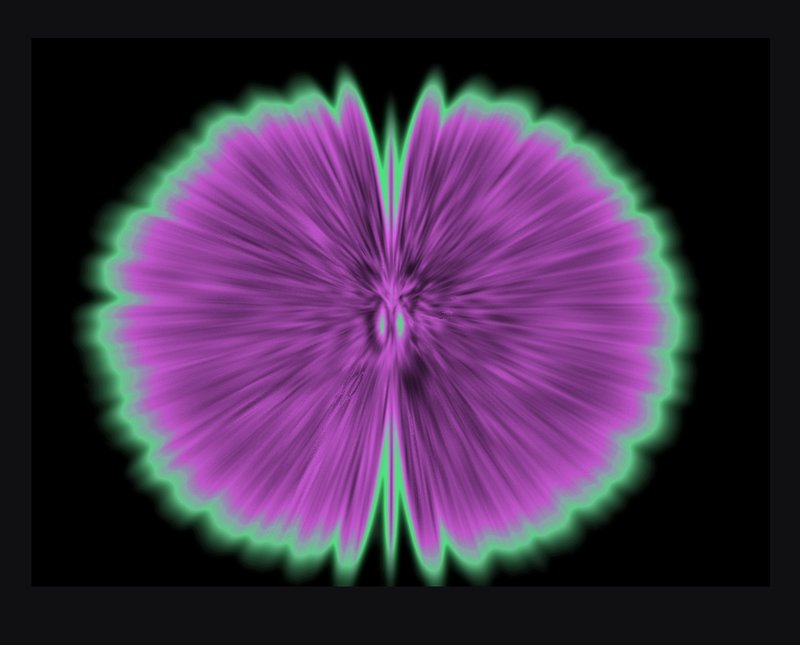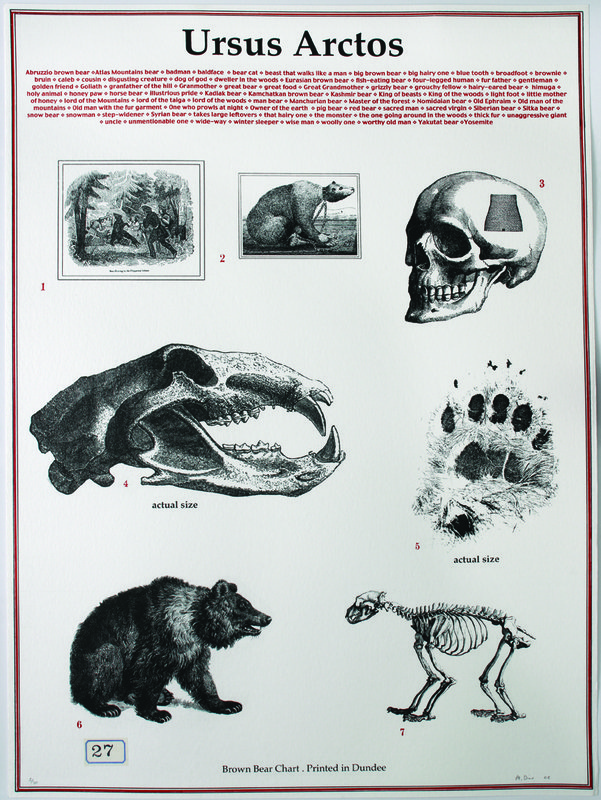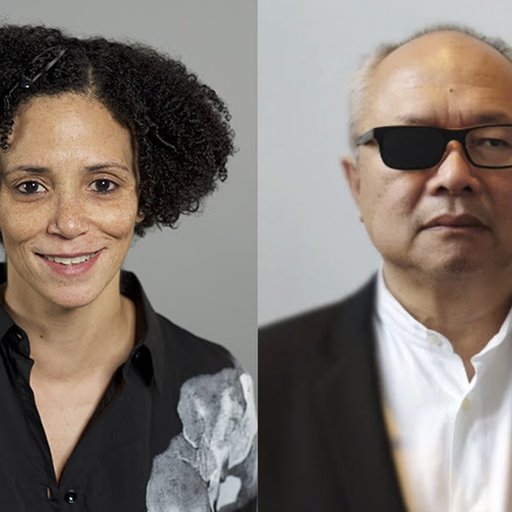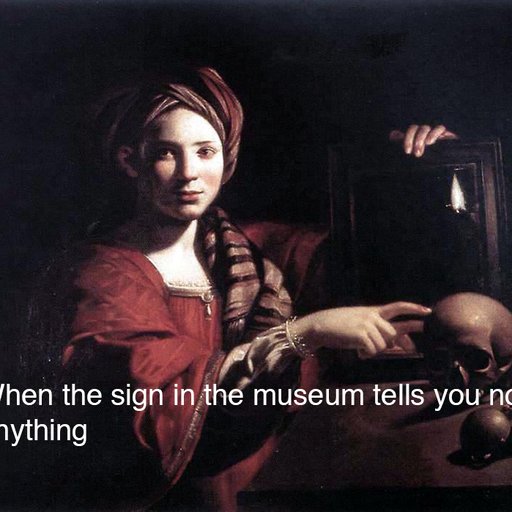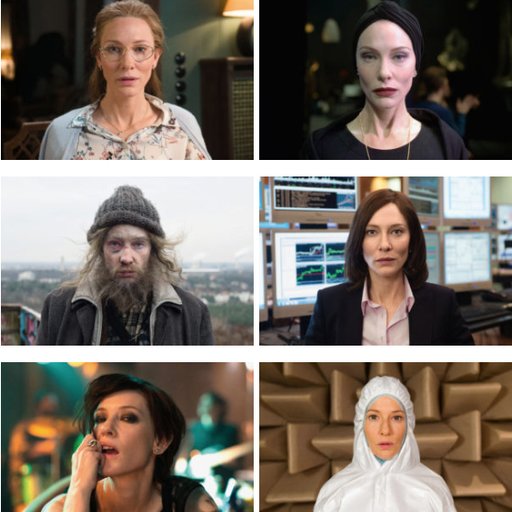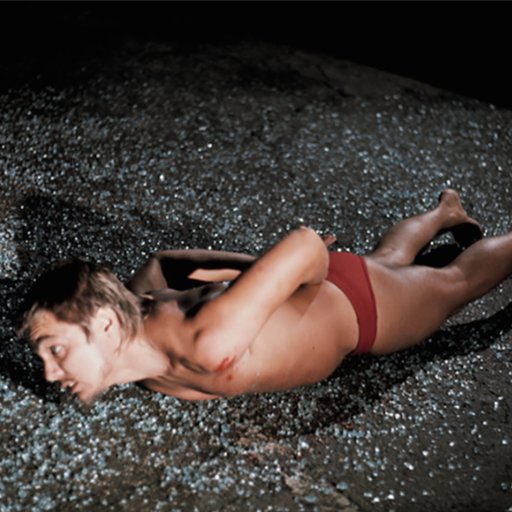While environmental art has arguably existed since our Paleolithic ancestors began painting their favorite hunting exploits on the craggy stone walls of their cave abodes, the current climate of environmental precarity (from pending ecological collapse to complete nuclear annihilation) demands some innovation on the part of artists to provide a new lexicon to tackle these apocalyptic terrains.
Here are nine artists who are creating an expanded discourse on the environment; one befitting our current stage in the Anthropocene epoch (a proposed geological era marked by the impact of human activity on earth), daring to use its arsenal of critical and poetic devices to intrepidly go where no artwork has gone before.
(On a related note: Want to support non-profits like Greenpeace and get an original artwork in return? See Our Guide to Conscious Collecting: Support the Causes You Care About with Art )
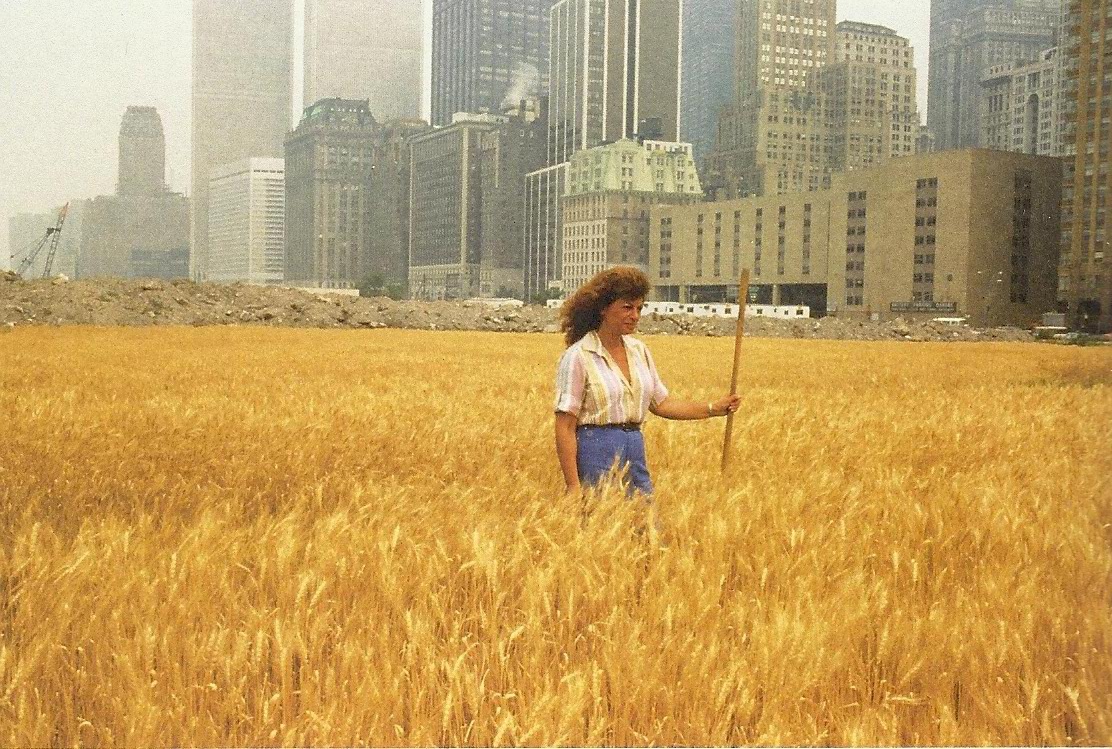
Widely considered the godmother of the eco-art movement (a sub-movement of environmental art),
Agnes Denes
pioneered the practice of creating land art pieces that involved functional ecological systems-restoration, as well as socially engaged, activist, community-based interventions. In her most widely known piece
Wheatfield, A Confrontation
(1982), the Hungarian-American artist planted an entire field of golden wheat on a $4.5 billion two-acre plot of landfill (today, this land is Battery Park City). Over the course of six months, the artist dumped 200 truckloads of dirt on the property, and then hand-sowed seeds, weeded, fertilized and irrigated it. On August 16th, over 1,000 pounds of beautiful, golden wheat was harvested and sent to 28 cities around the world where they were distributed and replanted. In its transgressions of art's liminal functions,
Wheatfield
staked new ground for art to be both communicative and participatory as an active salve to remedy ecological disaster. Imagine seeing those amber waves of grain on your Wall Street lunch break!
(Read our interview with the artist: "You Can't Put a Lid on Creativity": Visionary Eco-Artist Agnes Denes on Her Dauntless Quest to Understand the Universe )
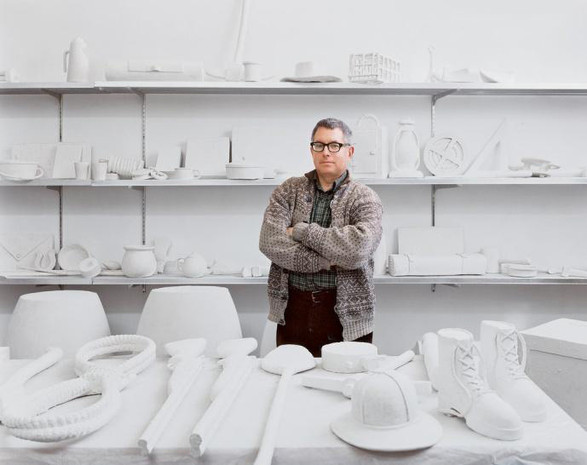
Adopting museum display structures, 16th-century Wunderkammer cabinetry, and employing large-scale installation,
Mark Dion’s
work investigates and reinterprets canonical representations of natural history. Think of it as an institutional critique of Nature. For the American conceptual artist, the fields of anthropology and ecology are disciplines inextricable from one another within an institutional context—it is impossible for a museum to display nature without imposing anthropological bias. In his own words, “Museums... embody the values of their time. In the 19th century, the polar bear was presented as a fearful monster with sharp claws; nowadays as a vulnerable creature that needs to be protected.’’ In an interview with
Art21
, Dion expresses that for him, science is understood as “an ever-evolving way of thinking... It’s important that the category of nature is not something the field of science has a monopoly on—that everyone has a say in what gets to be nature, at a particular time, for a particular group of people. In order to motivate people to care about the natural world around us, one of our chief tools is an aesthetic sensibility."
(Read our interview with the artist: "Like Noah Hunting the Animals He Saved on the Art": Mark Dion on the Contradictions of Environmentalism )

Michaelf Assiff’s
glossy, industrial, and slick materials are some of the last things you might associate with environmental art—all to the artist’s point. For the young, New York-based Assiff, the pristine nature envisioned by our ancestors is all but a fantasy; our current post-industrial ecology is scarred by corporate violence and influence. For his show "Ozone Flowers" at Mexico City's Galeria Mascota, Assiff etched a pattern graphing the fluctuations of carbon prices into the drywall of the gallery. A sculpture in the form of a cake-cum-behive, emits an engineered fresh flower scent that scientists found to be more enticing to bees than the scent of actual flowers grown in high-ozone environments. But Assiff isn't just set on outing the industries that are causing environmental destruction—he's also playing a small part in correcting it:
one sculpture in "Ozone Flowers" displays a certified receipt showing that the artist voluntarily purchased carbon offsets to cover his footprint in creating the show.

For
Pierre Huyghe’s
Skulptur Projekte commission, the French artist transformed an abandoned ice skating rink behind a Munich Burger King into a surreal, Kubrick-like ecosystem. Titled
After Alife Ahead
, the massive installation feels like some sort of Martian training ground, forcing participants to navigate its trenches. The centerpiece of the exhibition features a large aquarium with glass that shifts from transparent to black depending on the aquarium’s inhabitant—a tiny venomous sea snail.
In a less conspicuous instance of bio-connectivity, guests are encouraged to download a virtual reality app that has graphics that correspond with a growing colony of cancer cells incubating somewhere within the building. The rate in which these cells grow are determined by sensors monitoring conditions within the space. “What you have there is really a network of self-organizing systems,” Huyghe said in an interview with Artnews. “They are in constant displacement. They grow, they evolve, they shift. There’s no master-slave in that regard. I’m interested in letting, in a certain way, self-organizing systems try either to find or to not find a symbiosis. I try my best not to intervene within it.”
Lucy Orta

A pioneer in the artistic practice of
Relational Aesthetics
,
Lucy Orta
(often in collaboration with her husband, Jorge) has been developing social systems of engagement for a better tomorrow since 1992. For the English artist, art ought to be a
“proposal for alternative living.”
Her wide-ranging practice includes projects like developing suits for urban lifeguards, emergency shelters for refugees, survival kits, and immense public feasts. In her
70x7
series, for example, Jorge and Lucy orchestrate week-long interventions within a particular town, collaborating with local farmers and growers to reinstate the farmer's market as a vital institution, and to highlight and develop local agricultural relationships as a source of pride. During the week, they host events open to the public—including bread-making workshops, recipe sharing, urban gardening, and food tasting. The end of the week culminates in an enormous public dinner, using ingredients sourced by local farmers and served by volunteers from the local soup kitchen.
In 2007, the studio won the Green Leaf Award for Sculpture for artistic excellence with an environmental message, presented by the United Nations Environment Programme in partnership with the Natural World Museum , at the Nobel Peace Centre Oslo, Norway. Orta is also the Chair of Art and the Environment at the University of the Arts London, as well as the former head and co-founder of the pioneering Head of the Man & Humanity Masters program in Industrial Design at the Design Academy Eindhoven, stimulating socially driven and sustainable design solutions, alternative systems and products.
(Read our interview with Lucy Orta: How to Make Useful Art as a "Proposal for Alternative Living": Nicolas Bourriard Interviews Lucy Orta )
Kim Laughton
Using 3D imaging software, the Shanghai-based artist
Kim Laughton
creates haunting, post-apocalyptic tableaus that tell us of a near-future dystopia. These uncanny situations seem to posit a scenario: What if the world ended today? What would the archaeology of our time look like? His point-of-view virtual reality videos often feel as though we, as his audience, are an alien species who have come upon earth a few years after its demise. In one video titled
making of
, we spin around a massive mound of dirt, topped by a lone concrete mixer. It sits in reverence as a halo of office papers swirl around it. As we observe this ancient deity, a voice-over monologue reads cliche lines from office emails: ”If you are unhappy with this process...happy to get on a call... see attached...nice to e-meet you!”
Mark Dorf

For artist
Mark Dorf
, “glaciers are one of our planet’s most important archives. Not only do they preserve organic matter such as plants and soil from the Earth’s past, but also air trapped within the ice ranging anywhere from 500 to 500,000 years old. This air contains important information about the progression and natural ebb and flow of our atmosphere.” In order to respond to the rapid melting of these natural time-capsules, New York-based Dorf travelled to the Pariacaca Glacier in the Peruvian Andes. There, he placed three waterproofed and concrete-cased USB drives containing photographs of the exact spot in which the drive is located, as well as instructions for use in five different languages. In effect, Dorf has created a time capsule for this time capsule, accessible to anyone with a corresponding device. The photographs stored on the drive are inaccessible anywhere else, making them exclusive to those who visit the site.
The Institute of Queer Ecology
An initiative founded by RISD student
Lee Pivnik
, The Institute of Queer Ecology (IQECO) aims to create an “interspecific queer utopia: an eden for snakes and sinners." Appropriating the aesthetics (and jumpsuits!) of scientific teams like those involved in developing the Biosphere, the Institute is a malleable collaborative organism that brings a queer discourse to the understanding of ecology. Their mission is to use biology and evolution to contextualize non-normative sexualities, adaptations, and presentations (the fact that homosexual behavior is found in most animal species contextualizes queerness among humans as a biological norm, rather than abnormality.) And using queer and feminist theory as a framework in which to understand our relationship to the natural world, IQECO produces exhibitions, publications and a yearly journal. This month, IQECO staged an exhibition in Biosphere 2, an Earth systems science research facility located in Oracle, Arizona, which included educational activities and programing for kids. IQECO's mission is to not only make art that comments on ecological issues, but to build communities and discussions outside of the art world bubble.
Natalie Jeremijenko

Have you ever wanted to text that cute trout you saw swimming around the East River? Probably not, but that didn't stop
Natalie Jeremijenko
from making it possible. Back in 2009, the artist/engineer collaborated with architect
David Benjamin
to animate the ecosystems under the surface of the East River. In her own words, the installation
Amphibious Architecture
reveals “what’s under this pretty reflective surface that enhances real estate value but is actually a diverse, teeming habitat.” Over the course of several months, New Yorkers could see a waterborne skyline of buoyant sensors, detecting various environmental changes and collecting data. Within those months, one could text an SMS number asking how the fish were doing to receive a response that described their watery conditions—“Hey there! There are 11 of us, and it’s pretty nice down here. I mean, dissolved oxygen is higher than last week...”
Using technology, coding, and experimentation, Jeremijenko offers functional and novel ways for us to interact with and learn about our environment, as it is. In a 2014 interview with the New York Times, the artist states that “a lot of my work concerns a crisis of agency—what can we do?” In describing another project in which she set up sensors to create a “mussel choir,” she discusses her position on the natural world and how it differs from the naturalists of old: “My primary interest is in the mussels’ spectacular adaptability. That puts me in a different class from traditional conservationism. I’m interested in how organisms adapt to the Anthropocene as opposed to the Sierra Club ‘conserve and preserve’ way of thinking.” The highly accomplished near-triple doctorate (she completed coursework from Stanford but never graduated) has given a TED talk on “the art of the eco-mind shift,” viewable here if you're interested.
[related-works-module]












